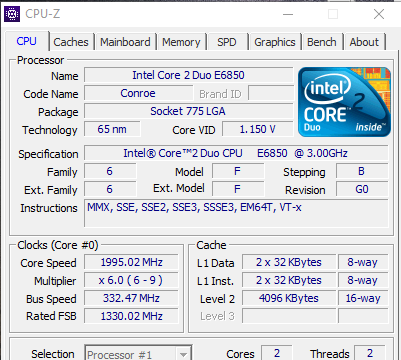

Memory type, size, timings, and module specifications (SPD). Processor name and number, codename, process, package, cache levels. This program supports detecting the processor's core voltage, L2 bus width, support for two processors (in Windows NT/2000 only), and memory timing (CAS Latency, RAS to CAS, RAS Precharge). Find out everything about your computer you ever wanted to know with this program that gives you information such as processor name and vendor, core stepping and process, processor package, internal and external clocks, clock multiplier, partial overclock detection, and processor features, including supported instructions sets. The program also knows how to save a validation file in CVF format, which contains basic information about the system and can be manually included in the database on the Internet later if desired.Free download CPU-Z 2.05 full version standalone offline installer for Windows PC, CPU-Z OverviewĬPU-Z is software that gathers information on some of the primary devices of your system.

If your computer is connected to the Internet, the program will offer to enter information about your system into a database that contains statistics on overclocking processors and overclocking frequencies, or show statistics on the most popular hardware configurations of computers. The RAM will show its frequency, timings, and specification for each memory module. The motherboard will show the manufacturer, model and revision number, BIOS model and date, chipset information, sensor readings, etc. It is possible to view the name and number of the processor, the core frequency and the process by which it was manufactured, the core voltage, information about the cache and the supported set of instructions, the frequency multiplier, and so on. Of course, its most important function, for which the CPU-Z has gained its fame, is to view information about the processor.


The well-known CPU-Z utility is able to show detailed information about several important components of your computer, such as CPU, RAM, motherboard, graphics adapter, and so on.


 0 kommentar(er)
0 kommentar(er)
